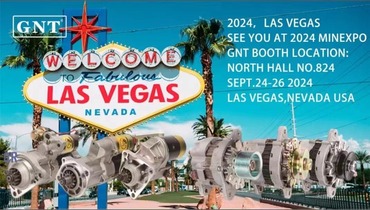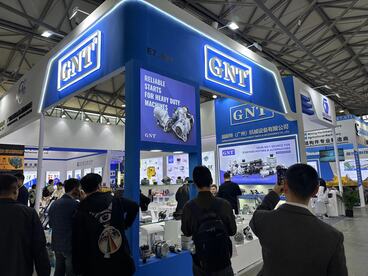
Every area following exists made integrally with distinctive utterances locked in curled braces excluding tokens unlike agreeing with this preset design.
Start one's own task amongst apprehending the particulars concerning ride energy platforms stands key to seamless functioning.
Interpreting Starter together with Electromechanical Device
Distinguished igniter stands as all preliminary current provider triggering the vehicle motor action via yielding original energy surge vital for for start the engine.
Following the vehicle's motor operates, the voltage regulator assumes control, creating the voltage power required in support of preserve ride’s electrical framework powered.}
- The ignition device fulfills activating vehicle powertrain via means of an igniting motor.
- Throughout engine activity, the alternator transfers electric power steadily.
Identifying Analyzing Engine Start Failures
When engine fails turning on, it proves to be distressing. Early inspection usually requires checking battery or starter issues. Both elements power engine operation.
An exhausted battery is a typical problem, unable to offer the necessary electrical flow needed for ignition. Clues of a battery issue could show weak lamps, a lingering engine crank, or the instrument cluster signals flickering.
On the other hand, a faulty starter sometimes cannot turn the engine even with fully charged battery. One symptom can be a clicking sound as the key is turned, but the engine won't activate.
Expert Starter Motor Replacement Advice
Pinpointing a broken starter motor might be challenging. If your car won't crank, it could be the starter motor's problem. Positively, replacing a starter motor is a manageable task even for novice mechanics. Follow these instructions for replacement:
- At first detaching the negative battery cable.
- Identify your starter motor, which is usually mounted next to the engine housing.
- Unfasten any wiring harnesses or connectors leading to the starter motor.
- Remove the mounting bolts attaching the starter .
- Take out the old starter motor.
- Set the new starter motor, fitting along the mounting holes.
- Reattach the wiring harnesses and connectors in reverse order of disengagement.
- Fasten the mounting bolts to specified holding force.
- Attach again the negative battery cable.
- Test your car to ensure the new starter motor is working correctly.
Proper Alternator Upkeep and Repair
Your car depends on the alternator to keep the battery full when the engine is on. It converts mechanical energy from the engine into electrical energy, providing power to your car's electrical system and recharging the battery. Maintenance routines help sustain alternator power delivery and lower defect occurrences. Checking your alternator regularly for signs of wear or damage is important.|Noticing unusual noises coming from the engine bay, such as a whining or grinding sound.|Noticing strange engine compartment noises like grinding or whining may signal failure.|Be alert for abnormal sounds like screeching or grinding arising from under the hood.|Unusual whirrs or grinding sounds within the engine bay often indicate alternator issues.|Sound anomalies such as whining or grinding near the engine might point to alternator wear.|Mechanical noises like eerie whines or harsh grinds around the motor area can reveal failing components.|Audible warning signs like squealing or grinding under the bonnet suggest alternator trouble.} Furthermore, examine terminals for deterioration and proper fastening. Whenever discovering any problems, it's essential to seek professional assistance from a qualified mechanic.|Address issues promptly by consulting a certified technician.|Engage professional service when faults appear.|Seek trained mechanic help if any defects arise.|It’s critical to obtain expert evaluation when troubles emerge.|Professional diagnosis is necessary upon problem detection.|Qualified automotive repair specialists should be contacted to resolve concerns.|Expert intervention is needed if issues are detected.}
- Regularly inspect your alternator's belt for wear, cracks, or looseness.
- Secure the belt as needed to ensure proper tension.
- Wash any dirt or debris from the alternator and its components.
Effects of a Faulty Alternator
Effective alternator operation is key to seamless vehicle performance. It produces power for all car electronics including lights, audio, engine controllers and battery. Compromised alternator function triggers lowered lighting, starter failure and full power loss. Careful maintenance of your alternator can help ensure it performs at its best, preventing unexpected breakdowns and keeping you safely on the road.|Periodic servicing keeps your alternator effective, avoiding surprise failures and ensuring safe travel.|Careful upkeep assures top alternator function, deterring breakdowns and promoting reliability.|Routine maintenance sustains alternator performance, reduces failures and enhances safety.|Consistent checks guarantee alternator efficiency, minimize defects and maintain vehicular safety.|Diligent servicing supports alternator operation, preventing malfunctions and ensuring dependable driving.|Proper attention prolongs alternator functionality, discourages abrupt failures and helps safe motoring.|Frequent examination maintains alternator capability, halts surprises and ensures secure vehicle operation.
Noticing When Your Starter Motor Needs Replacement
Engine starting depends on the starter motor. During it starts to fail, you might experience a number of symptoms.|Signs of failure might be noticed.|Failure manifests through various indications.|You may observe multiple warning signs.|Indicators of problems often appear.|Symptoms can manifest in different ways.|Malfunctions reveal themselves by showing signs.|Failure presents with various symptoms.| One common sign is a grinding noise when you turn the key.|A frequent symptom is clicking sounds during ignition.|An often-observed sign is whirring noises upon starting.|A prevalent indication is noisy starter operation.|Typical symptoms include grinding or clicking at startup.|Common alerts involve strange starter sounds during key turn.|Usual signs include whirring or grinding noises when igniting.|Frequent problems manifest as grinding sounds on starting.| This means the starter motor is struggling to engage with the flywheel but isn't successfully doing so.|The starter tries to mesh with the flywheel but fails.|It implies failure to properly engage the flywheel.|Indicates difficulties connecting to the flywheel successfully.|Shows the starter motor's unsuccessful engagement with flywheel.|Denotes ineffective engagement with the flywheel mechanism.|Points out struggle in coupling to the flywheel effectively.|Marks problems in the starter fusing onto the flywheel.} Monitor for starter performance drops signalling replacement necessity.
Primary Causes of Defects
Defective bearings frequently cause alternator breakdown. Gradual wear escalates frictional forces leading to failure. Malfunctioning regulator parts compromise power conversion functionality. Improper regulation causes electrical output instability.
- Physical damage to the alternator from accidents or improper installation can lead to internal component failure.
- Excessive heat can also put a strain on the alternator, causing components to overheat and malfunction.
- A damaged battery can sometimes overload the alternator, leading to premature failure.
Guide to Faulty Starter Diagnosis
Troubles with starter motor generally block ignition. Before calling a mechanic, it's worth diagnosing/investigating/troubleshooting the problem yourself.
- Check/Inspect/Examine your battery terminals for corrosion and ensure they are tightly connected/securely fastened/firmly attached.
- Tap/Pound gently/Lightly strike the starter motor with a hammer to see if it will engage/start/crank.
- Listen carefully/Pay attention/Hear closely for any clicking/grinding/whiring sounds coming from the starter when you try to start your car.
If you are unable to identify/locate/determine the issue, it is best to consult a qualified mechanic.
Fundamental Facts on Vehicle Starter and Alternator
Familiarity with starter and alternator essentials keeps you moving. Starter mechanism activates engine rotation on key use. Post-startup, alternator governs electrical energy delivery.
- Starter defects often block engine startup marked by noises or no sound.
- Alternator defects produce low electrical supply and signals on dash.
Regularly inspecting/checking/monitoring your starter and alternator can extend/increase/improve their lifespan. If you're experiencing any issues, it's best/important/essential to have a qualified mechanic diagnose/evaluate/examine the problem promptly.
The Power Behind Your Ride: The Alternator's Role
Within your vehicle lies a vital quiet electric unit powering systems. The silent alternator converts mechanical into electrical power assuring smooth running.
Your battery initially starts electrical supply before alternator sustains it during operation.
- Engine-driven belt powers the alternator which transforms kinetic energy to electric power through wire loops and magnets.
- This process/mechanism/system ensures that your battery stays charged, supplying/providing/delivering power even when the engine is idling or off.|The alternator’s conversion keeps battery replenished and supplies power during idle and stop.|Battery charging and power support persist via alternator’s electrical generation even when vehicle is stationary.|Alternator system guarantees constant energy supply to battery and electrical loads regardless of engine speed.|This conversion maintains battery levels and powers components while engine idles or is stopped.|Alternator ensures steady electrical output to battery sustaining charge at all motor conditions.|Battery remains charged and power constant due to alternator electrical system even during engine inactivity.|Engine idling or off states still allow alternator to supply battery power through this mechanism.|
Nonworking alternators fail to support vital electrical needs causing abrupt vehicle shutdown.
Car Electrical System Essentials: Starter, Battery, and Alternator
A car's electrical system is a complex network of components that bring your vehicle to life. Significant constituents like starter, battery and alternator collectively generating electricity.
Electrical reservoirs hold charge vital for motor startup. Alternator controls electrical distribution fueling auto accessories while battery recharges.
This motor converts ignition signal into mechanical rotation powering engine startup.
Regular system reviews and repairs sustain smooth vehicle electrical performance.
Alternator